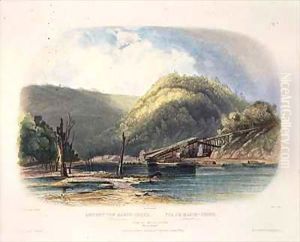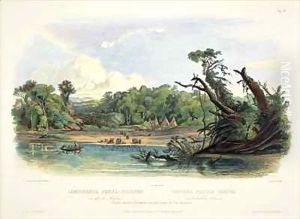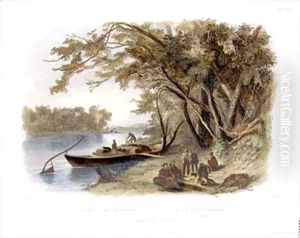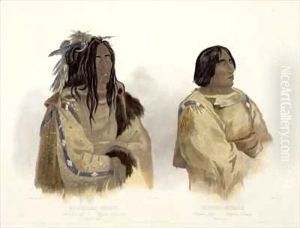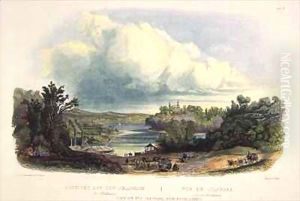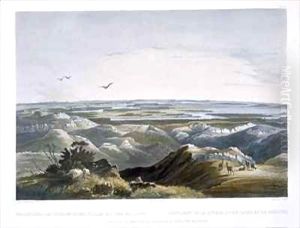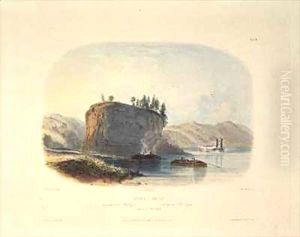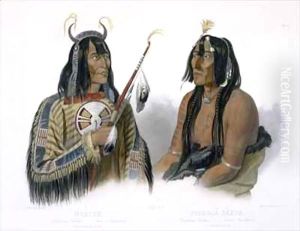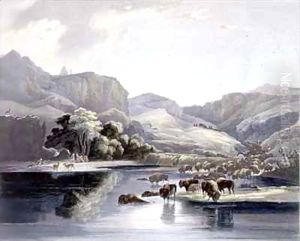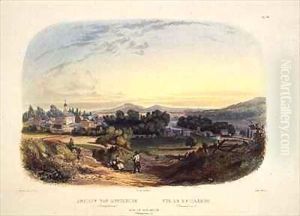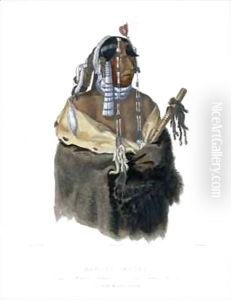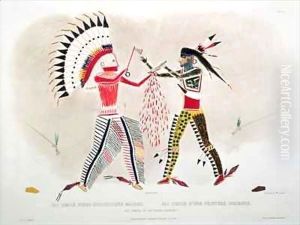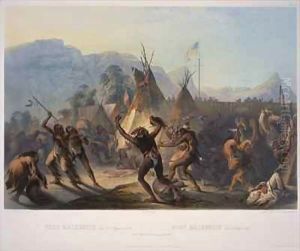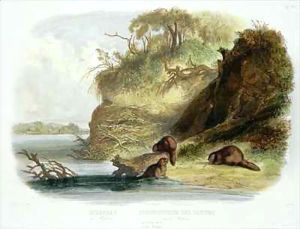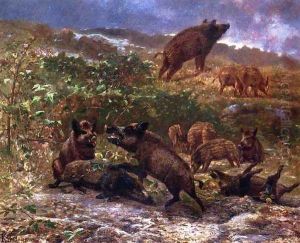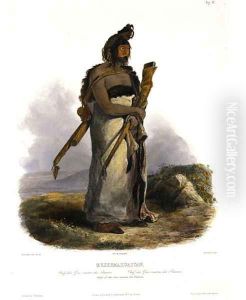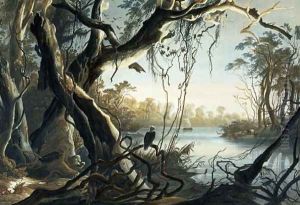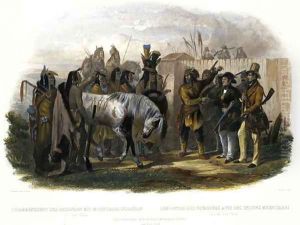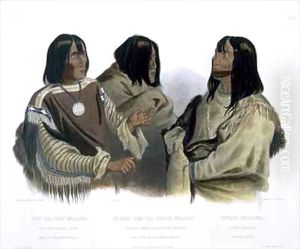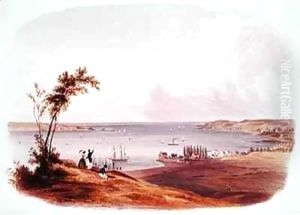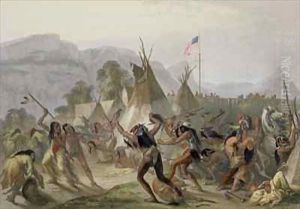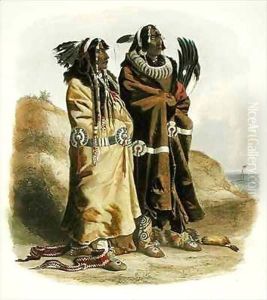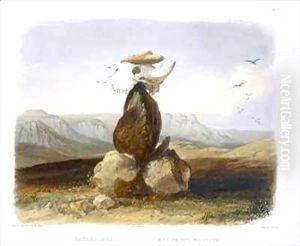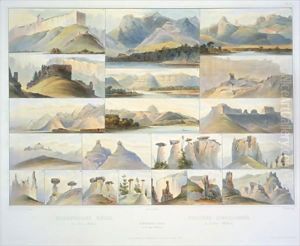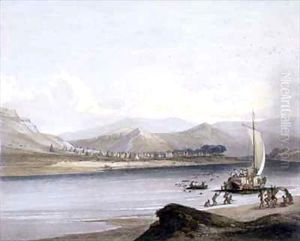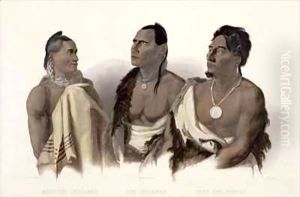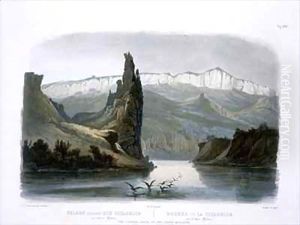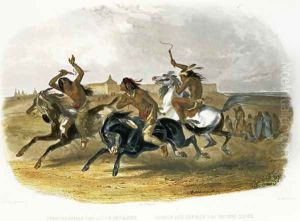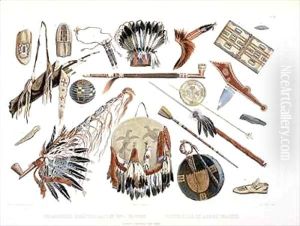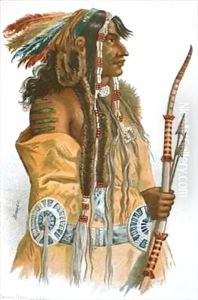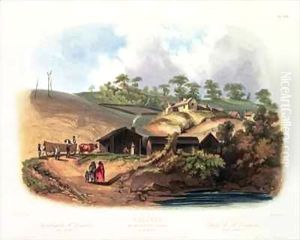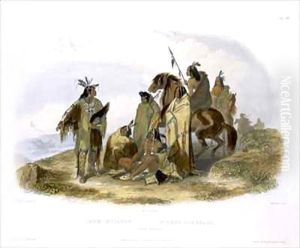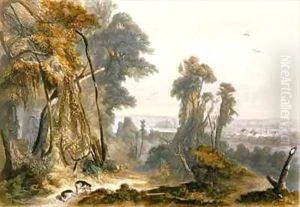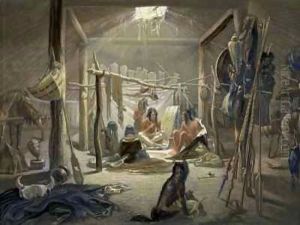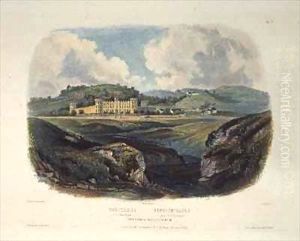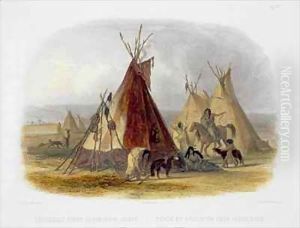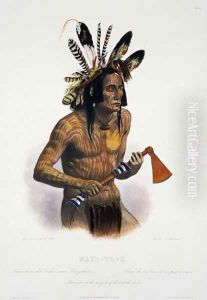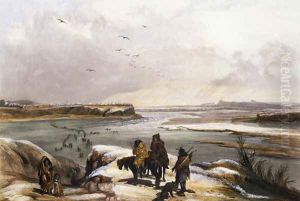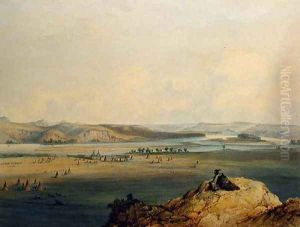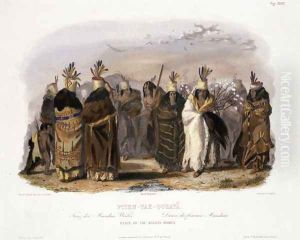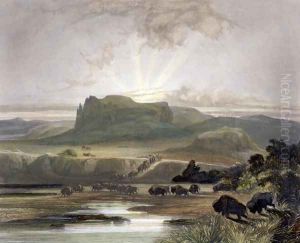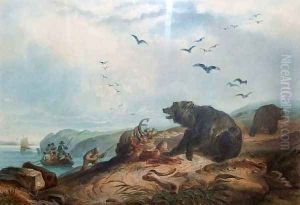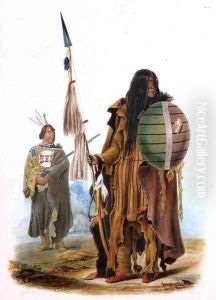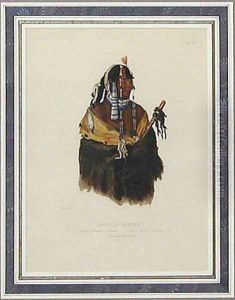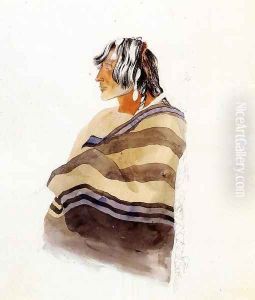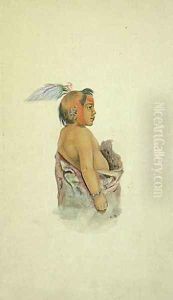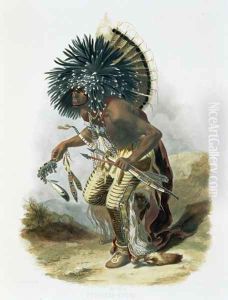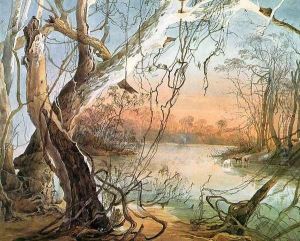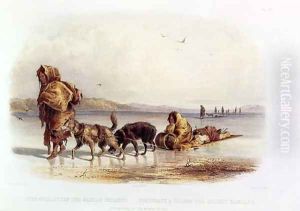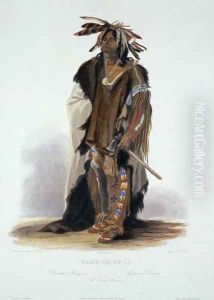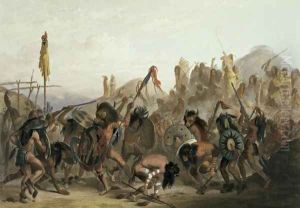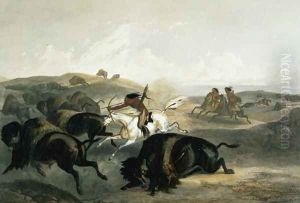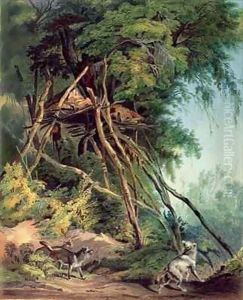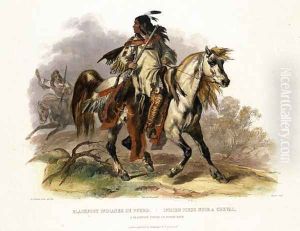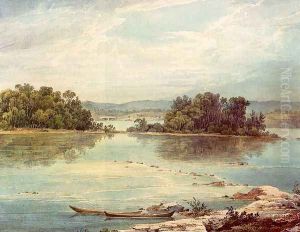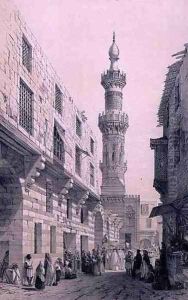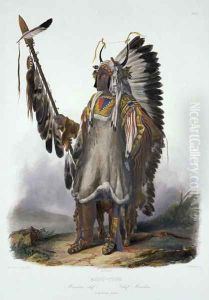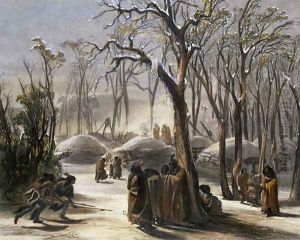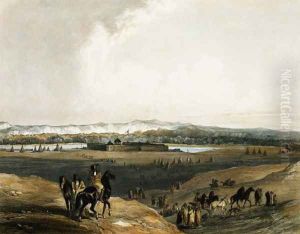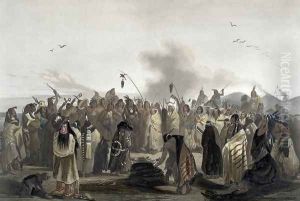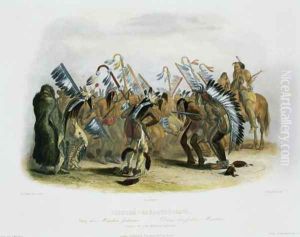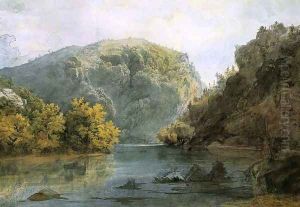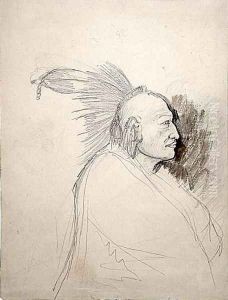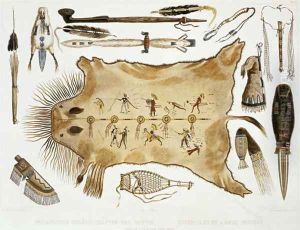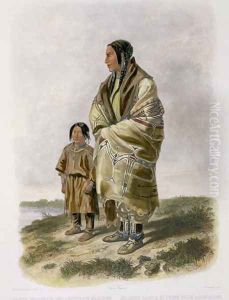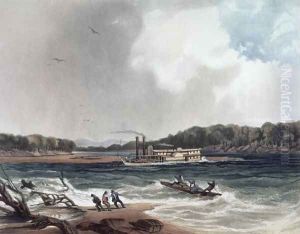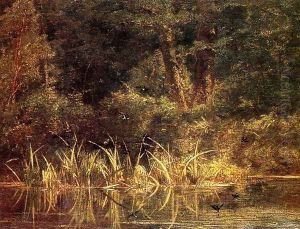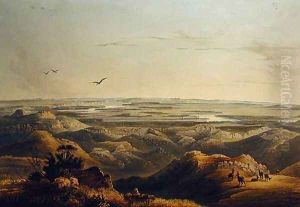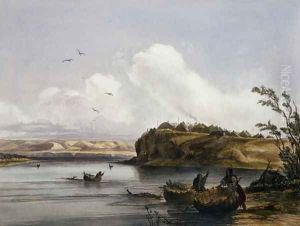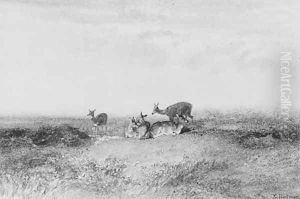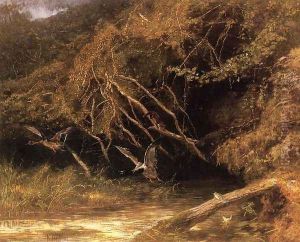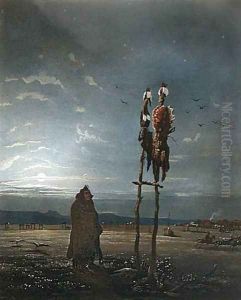Karl Bodmer Paintings
Karl Bodmer was a Swiss-French artist known for his precise and detailed illustrations of the American West. Born on February 11, 1809, in Zurich, Switzerland, Bodmer developed an early passion for art, influenced by the European tradition of landscape painting. His talent was apparent from a young age, leading him to pursue a career that would eventually make him one of the most important documentarians of Native American culture and the natural landscape of the early 19th century United States.
In 1832, Bodmer was invited by German prince Maximilian zu Wied-Neuwied to join him on an expedition to North America, with the purpose of exploring and documenting the landscape, wildlife, and indigenous peoples of the Upper Missouri River. This journey would prove to be a pivotal moment in Bodmer's career and life. Over the course of the expedition, which lasted from 1832 to 1834, Bodmer created hundreds of watercolors and sketches that captured the people, flora, and fauna they encountered with remarkable accuracy and sensitivity.
Bodmer's work during this expedition was groundbreaking. Not only did he provide some of the most detailed and accurate images of the Native American tribes and their way of life before significant European influence, but his landscapes also offered a vivid portrayal of the American West just prior to its major transformation by westward expansion. These images were later published as part of Prince Maximilian's travelogue, which gained significant attention and acclaim in Europe for both the prince and Bodmer.
After returning to Europe, Bodmer continued to work on his American illustrations, contributing to the publication of Maximilian's travel account, 'Reise in das innere Nord-Amerika in den Jahren 1832 bis 1834'. This work, published in multiple volumes during the 1830s and 1840s, was a monumental achievement and solidified Bodmer's reputation as a master illustrator and ethnographer.
Despite the success and historical significance of his American expedition works, Bodmer's career after his return to Europe is less documented. He continued to paint and exhibit, but never again achieved the level of acclaim he received for his American works. Bodmer eventually settled in Barbizon, France, where he continued to paint until his death on October 30, 1893.
Karl Bodmer's legacy is invaluable, particularly his contribution to the preservation of a visual record of Native American cultures and the natural environment of the early 19th-century American West. His works remain a crucial resource for historians, ethnographers, and art historians, offering insight not only into the subjects he depicted but also into the perspectives and attitudes of European explorers during this period.
